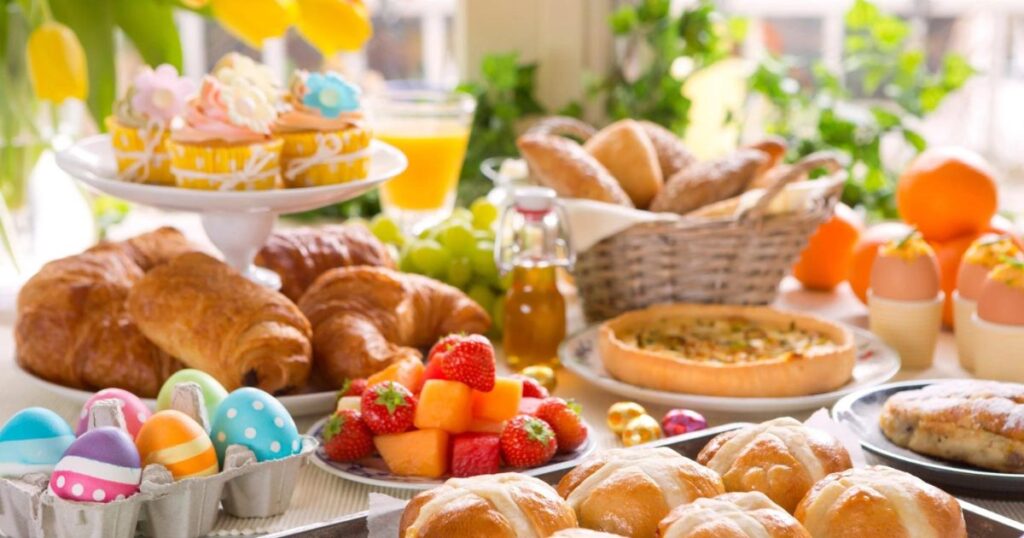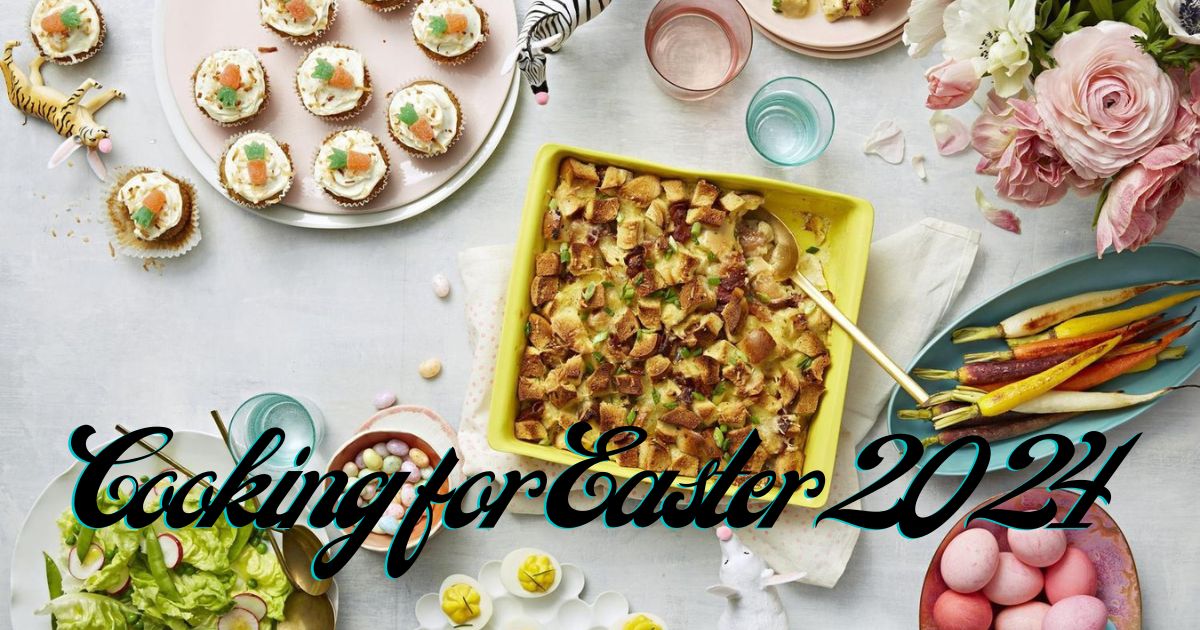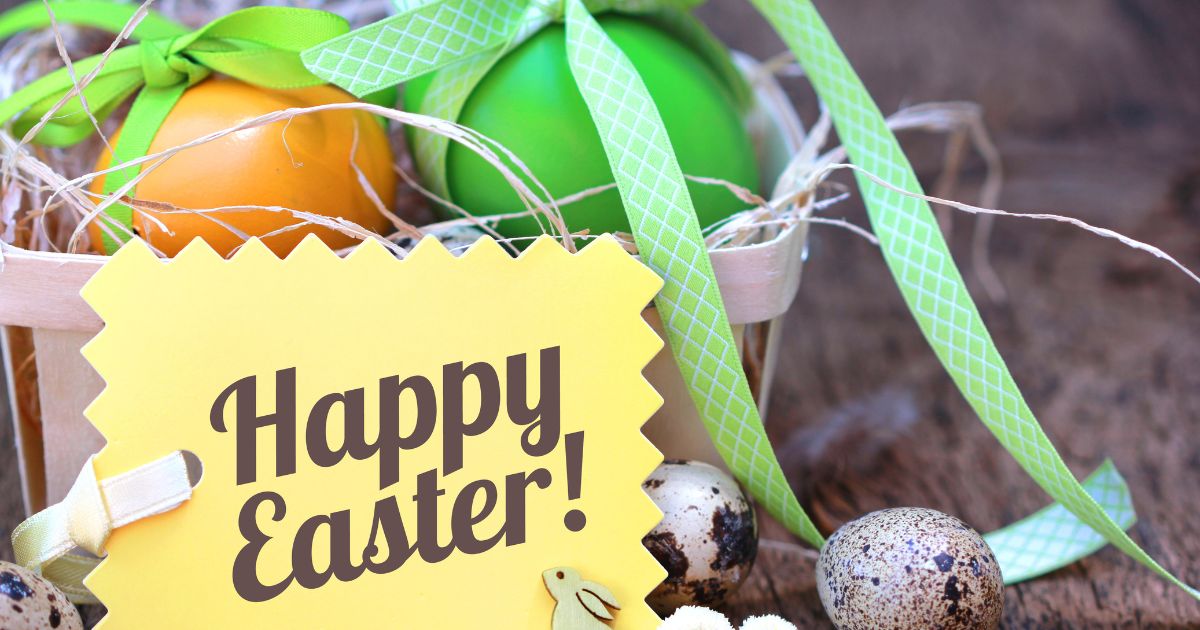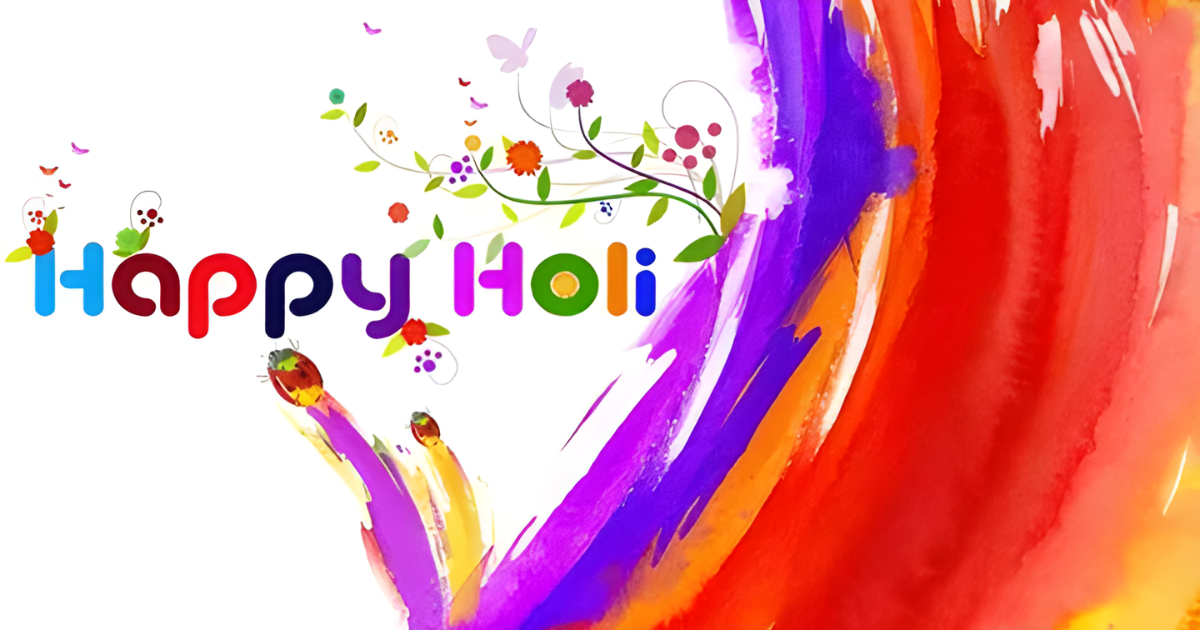Cooking for Easter: A Delicious Celebration
Introduction
Easter is a time of renewal, hope, and celebration. It’s a holiday that brings families and loved ones together, and what better way to honor this special occasion than by preparing delectable dishes that will delight everyone’s taste buds?
Cooking for Easter is not just about creating mouth-watering meals; it’s also a cherished tradition that lets us connect with our cultural heritage and create lasting memories. In this comprehensive guide, we’ll explore a variety of Easter recipes, techniques, and traditions from around the world, ensuring that your cooking experience is both enjoyable and memorable.
The Significance of Easter Cooking Traditions
Easter has long been associated with various culinary traditions that reflect different regions’ diverse cultures and beliefs. For many, cooking for Easter is a way to honor religious and cultural customs passed down through generations. From the symbolic Easter bread to the vibrant Easter eggs, each dish holds a special meaning and plays a vital role in the celebration.
In the Christian faith, Easter marks the resurrection of Jesus Christ, making it one of the most significant religious holidays. Traditionally, Easter meals are meant to break the fasting period observed during Lent, allowing for the indulgence of rich and flavorful dishes. Cooking for Easter in this context often involves preparing celebratory foods that symbolize new life and rebirth.
Easter Brunch: A Delightful Start to the Day
Easter brunch is a beloved tradition that brings families and friends together to savor delicious dishes and create cherished memories. This leisurely meal is perfect for showcasing your cooking skills and indulging in various flavors.
1. Classic Easter Brunch Dishes
- Quiche: Whether you prefer a classic quiche Lorraine or a vegetarian option, this savory tart is a brunch staple that can be customized to suit your taste preferences.
- Eggs Benedict: A true brunch classic, eggs Benedict combines perfectly poached eggs, Canadian bacon or ham, and a rich hollandaise sauce, all served on a toasted English muffin.
- Cinnamon Rolls: Warm, gooey, and irresistibly fragrant, homemade rolls are a must-have for any Easter brunch spread.
- Frittata: Packed with vegetables, cheese, and your choice of protein, a frittata is a versatile and crowd-pleasing option that can be served hot or at room temperature.

2. Innovative Brunch Creations
If you’re feeling adventurous, why not try some unique and creative Easter brunch dishes? Here are a few ideas to inspire you:
- Breakfast Charcuterie Board: Elevate your brunch game with a visually stunning and delicious charcuterie board featuring an assortment of meats, cheeses, fruits, nuts, and accompaniments.
- Avocado Toast Bar: Set up a build-your-own avocado toast bar with various toppings like smoked salmon, feta cheese, cherry tomatoes, and microgreens.
- Breakfast Tacos: Spice up your brunch with a twist on traditional tacos, filled with scrambled eggs, chorizo, avocado, and your choice of toppings.
Easter Main Courses: Savory Delights
While Easter brunch is a popular tradition, many families prefer to gather for a heartwarming main course later in the day. Whether you’re a fan of classic roasts or eager to explore new flavors, cooking for Easter offers many delicious options.
Easter Dinner Ideas: Traditional Easter Main Dishes

- Roast Lamb: A staple in many Easter celebrations, roast lamb is a succulent and flavorful centerpiece that can be seasoned with different herbs and spices.
- Glazed Ham: A beloved classic, glazed ham is often adorned with a sweet and tangy glaze, creating a perfect balance of flavors.
- Roast Turkey or Chicken: For those who prefer poultry, a roasted turkey or chicken is a versatile option that can be seasoned and stuffed to suit your tastes.
Globally Inspired Easter Main Courses
Expand your culinary horizons by incorporating flavors and techniques from different cultures into your Easter feast:
- Greek Lamb Kleftiko: Slow-roasted lamb seasoned with garlic, lemon, and oregano, wrapped in parchment paper for tender, melt-in-your-mouth perfection.
- Caribbean Jerk Chicken: Spice up your Easter with this flavorful and aromatic Caribbean dish featuring a blend of allspice, thyme, and scotch bonnet peppers.
- Mexican Mole Poblano: Impress your guests with this rich and complex Mexican sauce, typically served over roasted turkey or chicken.
Easter Sides: Complementing the Main Event
No Easter feast is complete without a selection of delectable side dishes that complement the main course and add variety to your menu. From traditional favorites to contemporary twists, these sides are sure to elevate your experience of cooking for Easter.
1. Classic Easter Side Dishes
- Roasted Asparagus: Fresh and vibrant, roasted asparagus is a versatile side dish that pairs well with various main courses.
- Scalloped Potatoes: Creamy, cheesy, and irresistibly comforting, scalloped potatoes are a beloved Easter staple.
- Honey-Glazed Carrots: Sweet and savory, these glazed carrots are a colorful and flavorful addition to your Easter spread.
- Dinner Rolls: Every meal is complete with a warm, freshly baked dinner roll to soak up all the delicious sauces and gravies.

2. Innovative Side Dish Ideas
If you’re looking to add a touch of creativity to your Easter menu, consider these unique and flavorful side dish options:
- Hasselback Potatoes: A visually stunning and crispy twist on traditional baked potatoes, with thinly sliced layers that create a fan-like appearance.
- Maple-Roasted Brussels Sprouts with Bacon: Elevate this often-overlooked vegetable by roasting it with maple syrup and crispy bacon.
- Butternut Squash and Kale Gratin is a delightful combination of roasted butternut squash, kale, and a creamy béchamel sauce, topped with a crispy breadcrumb crust.
Easter Desserts: Sweet Indulgences
No Easter celebration is complete without a delightful array of sweet treats. From traditional favorites to creative twists, these desserts satisfy even the most discerning sweet tooth.
1. Classic Easter Desserts
- Hot Cross Buns: These sweet, spiced buns adorned with a cross on top are a beloved Easter tradition and make for a delightful breakfast or dessert option.
- Carrot Cake: Moist, nutty, and topped with a luscious cream cheese frosting, carrot cake is a quintessential Easter dessert celebrating the season’s fresh produce.
- Coconut Cake: Light, fluffy, and infused with the tropical flavors of coconut, this cake is a refreshing and decadent addition to your Easter dessert table.

2. Creative Easter Dessert Ideas
If you’re feeling adventurous, why not try one of these innovative and delicious Easter dessert creations?
- Lemon Meringue Tart with Edible Flowers: Elevate a classic lemon meringue tart by adorning it with delicate, edible flowers for a touch of springtime elegance.
- Chocolate Mousse Cups with Candied Bacon: Indulge in the perfect balance of sweet and savory with these decadent chocolate mousse cups topped with crispy, candied bacon.
- Matcha Green Tea Cupcakes with White Chocolate Frosting: Embrace spring flavors with these delicate and visually stunning matcha green tea cupcakes, topped with a creamy white chocolate frosting.
Easter Brunch Cocktails and Beverages
No Easter celebration is complete without a selection of refreshing beverages and festive cocktails to complement your delicious spread. From mimosas to iced teas, these libations will surely add a touch of merriment to your gathering.
1. Classic Easter Brunch Cocktails
- Mimosa: A brunch staple, this effervescent cocktail combines dry sparkling wine with fresh orange juice for a refreshing and celebratory beverage.
- Bloody Mary: Spice up your brunch with this savory and refreshing cocktail featuring vodka, tomato juice, and an array of spices and garnishes.
- Bellini: Elegant and refined, the Bellini is a classic Italian cocktail made with peach purée and Prosecco, perfect for sipping on a sunny Easter morning.

2. Non-Alcoholic Easter Beverages
For those who prefer non-alcoholic options, these refreshing beverages are sure to delight:
- Lavender Lemonade: A unique twist on a classic, this lemonade is infused with the subtle floral notes of lavender for a refreshing and fragrant beverage.
- Strawberry Mint Iced Tea: Combine fresh strawberries, mint leaves, and black tea for a vibrant and thirst-quenching iced tea perfect for warm spring days.
- Mango Lassi: A popular Indian yogurt-based drink, this mango lassi is a creamy and delightful way to start your Easter festivities.

Easter Decorating and Presentation Tips
While cooking for Easter is the main event, the presentation and ambiance of your celebration are equally important. Here are some tips and ideas to help you create a festive and memorable atmosphere:
1. Table Setting and Decor
- Incorporate springtime colors like pastels, greens, and yellows into your table linens, napkins, and decorations.
- Use fresh flowers or potted plants as centerpieces, adding a touch of nature to your tablescape.
- Incorporate Easter symbols like eggs, bunnies, and chicks into your decor for a whimsical and festive touch.
2. Plating and Presentation
- Invest in beautiful serving dishes and platters to showcase your culinary creations in style.
- Garnish your dishes with fresh herbs, edible flowers, or candied citrus for a pop of color and flavor.
- Consider using unexpected serving vessels, like breadboards or ceramic egg crates, to add a rustic or whimsical touch to your presentation.
3. Crafting an Ambiance
- Set the mood with soft background music and flickering candlelight for a warm and inviting atmosphere.
- Incorporate seasonal scents like fresh-cut grass, blooming flowers, or baked goods through candles or reed diffusers.
- Create a cozy and inviting seating area with plush blankets and pillows for guests to relax and socialize after the meal.
Conclusion
Cooking for Easter is more than just a culinary endeavor; it’s a cherished tradition that brings families, friends, and loved ones together to celebrate the season of renewal and hope. Whether you honor long-standing customs or explore new flavors and techniques, the true essence of Easter lies in the joy of sharing delicious meals and creating lasting memories. Embrace the season’s spirit, let your creativity shine, and savor every bite of your Easter feast.
FAQs:
1: What is traditional food for Easter?
Traditional Easter foods include lamb, ham, hot cross buns, Easter eggs, and seasonal fruits and vegetables. Many of these have symbolic meanings in Christianity related to Easter and spring’s renewal.
2: What is usually cooked for Easter?
Everyday Easter dishes are glazed ham, roast lamb, deviled eggs, hot cross buns, Easter bread, roasted vegetables like asparagus and carrots, and desserts like carrot cake and coconut cake.
3: What is the traditional menu for Easter?
A traditional Easter menu often starts with egg dishes for brunch, like quiche or eggs benedict. The main course is typically roasted meat like lamb or ham, with sides of potatoes, roasted veggies, and rolls. Dessert highlights include carrot cake, coconut cake, and hot cross buns.
4: What is the most popular dinner for Easter?
Some of the most popular main dishes for Easter dinner are baked ham, roast leg of lamb, turkey, and prime rib.
5: What did Jesus eat for Easter dinner?
Jesus’ Last Supper with his disciples before his crucifixion is considered the first Easter meal. This Passover seder likely included bitter herbs, lamb, unleavened bread, and wine.
6: What do Catholics eat during Easter?
During Lent, which leads up to Easter, Catholics traditionally abstain from eating meat on Fridays. On Easter Sunday, they can enjoy meat dishes like lamb or ham, which were avoided during Lent.
7: What meat is eaten on Easter?
The most traditional meats for Easter are lamb and ham. The lamb represents God’s sacrificial lamb, while the ham signals the end of Lent’s meat restriction.
8: What is the meat of Easter?
The lamb is considered the quintessential meat of Easter due to its significance in Jewish Passover traditions and as a symbol for Jesus as the “Lamb of God.”
9: What is a biblical Easter meal?
A biblical Easter meal commemorating the Last Supper would include foods like lamb, unleavened bread, bitter herbs, and wine, as mentioned in Passover traditions.
10: What are five facts about Easter?
- Easter celebrates the resurrection of Jesus Christ. 2) The Easter Bunny originated from pagan fertility symbols. 3) Egg decorating represents new life and fertility. 4) Hot cross buns signify the cross Jesus died on. 5) Easter lilies symbolize purity, innocence, and new beginnings.
11: What can’t you eat during Easter?
For Christians observing Lent, meat and dairy are traditionally avoided during the 40 days before Easter as sacrifices, though rules vary by denomination.
12: What do people wear on Easter?
Many people wear new spring outfits, often with bright colors or patterns. Women and girls commonly wear dresses, while men and boys wear suits, nice pants, and button-down shirts. Decorative hats are also popular accessories.





